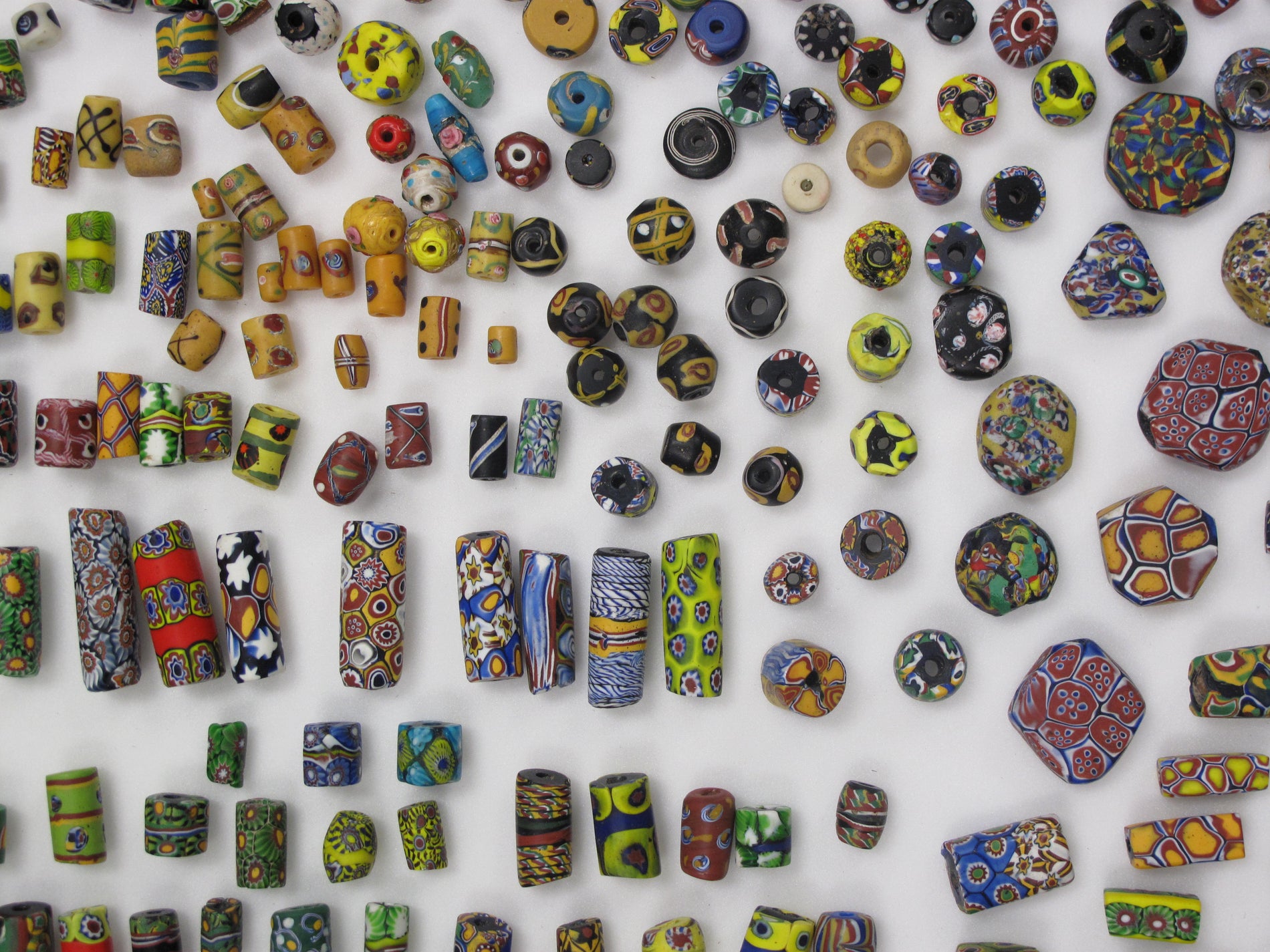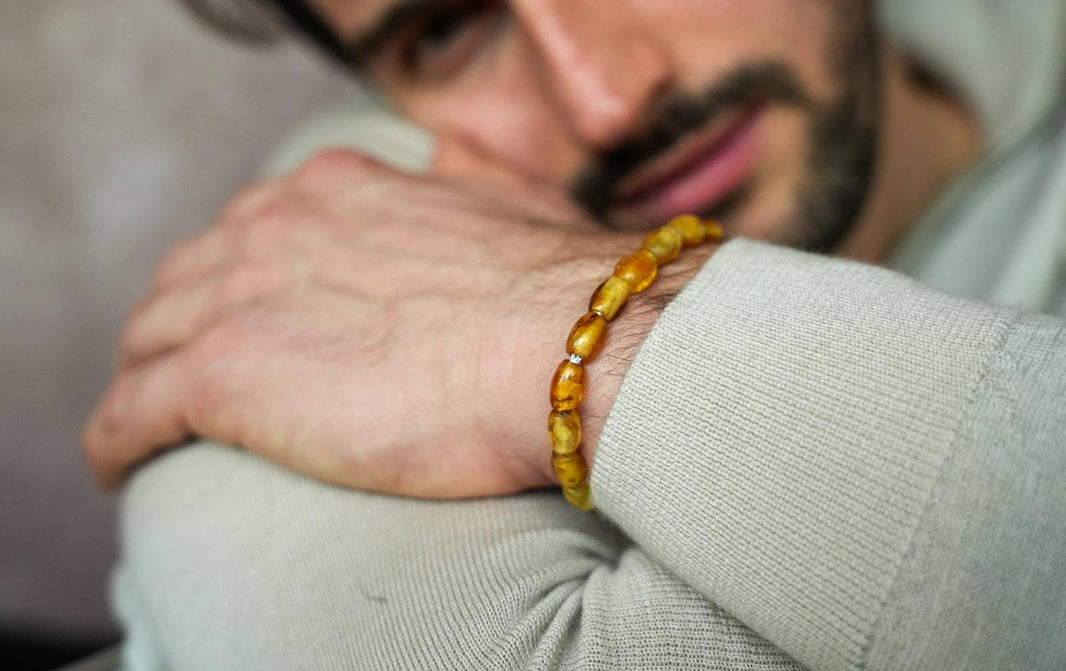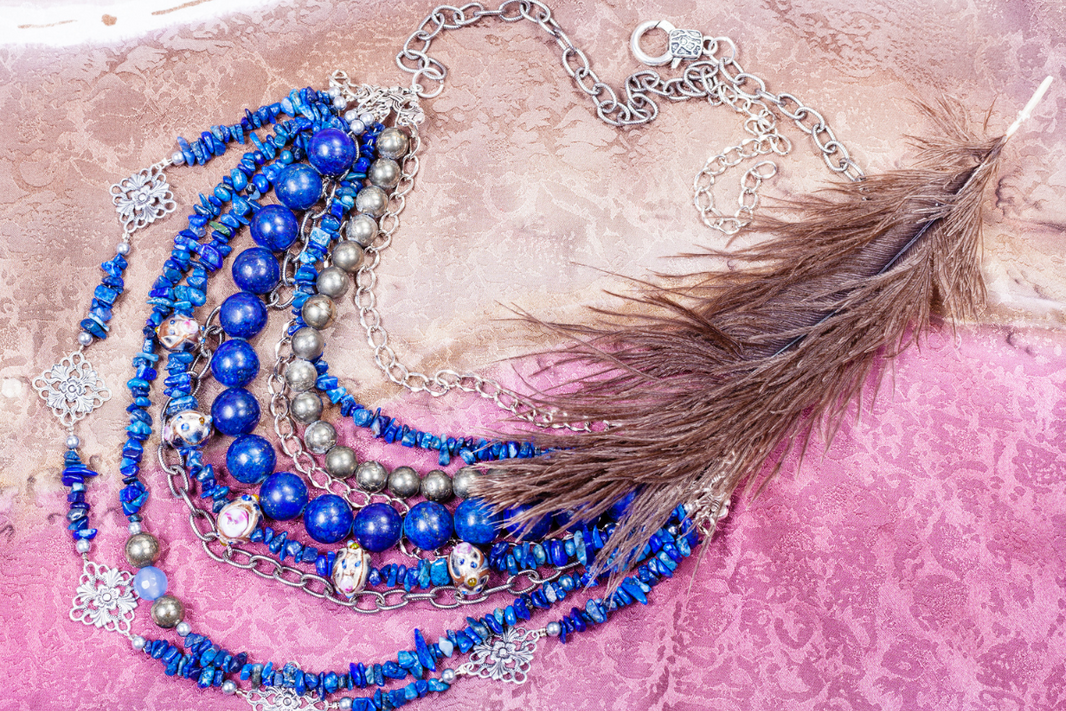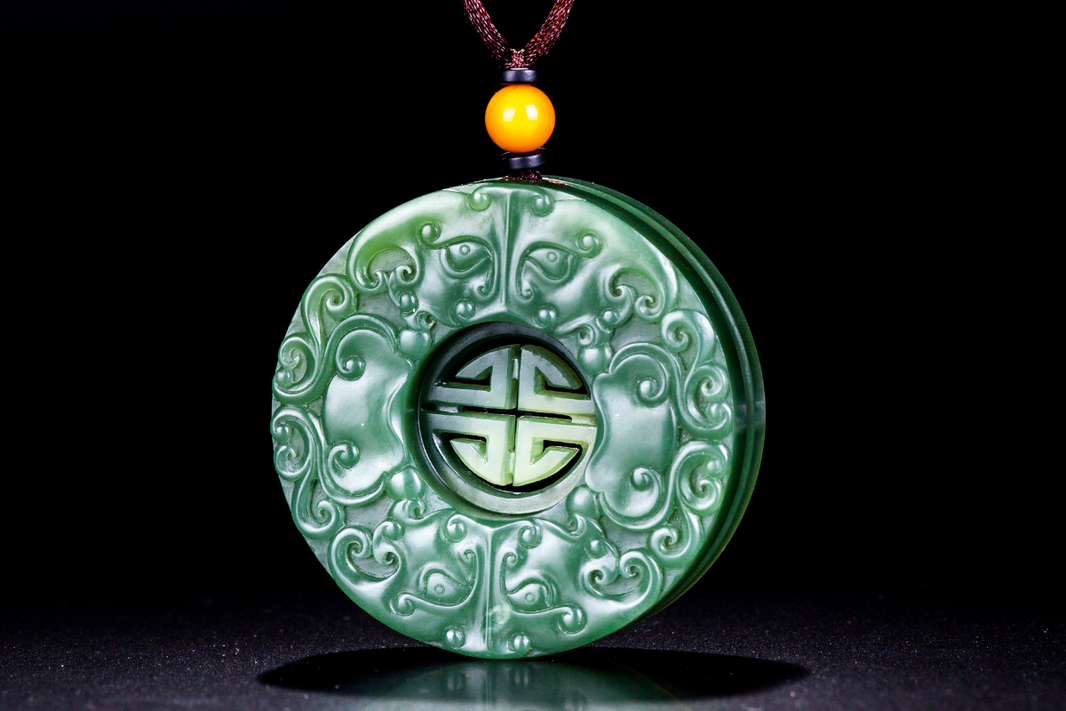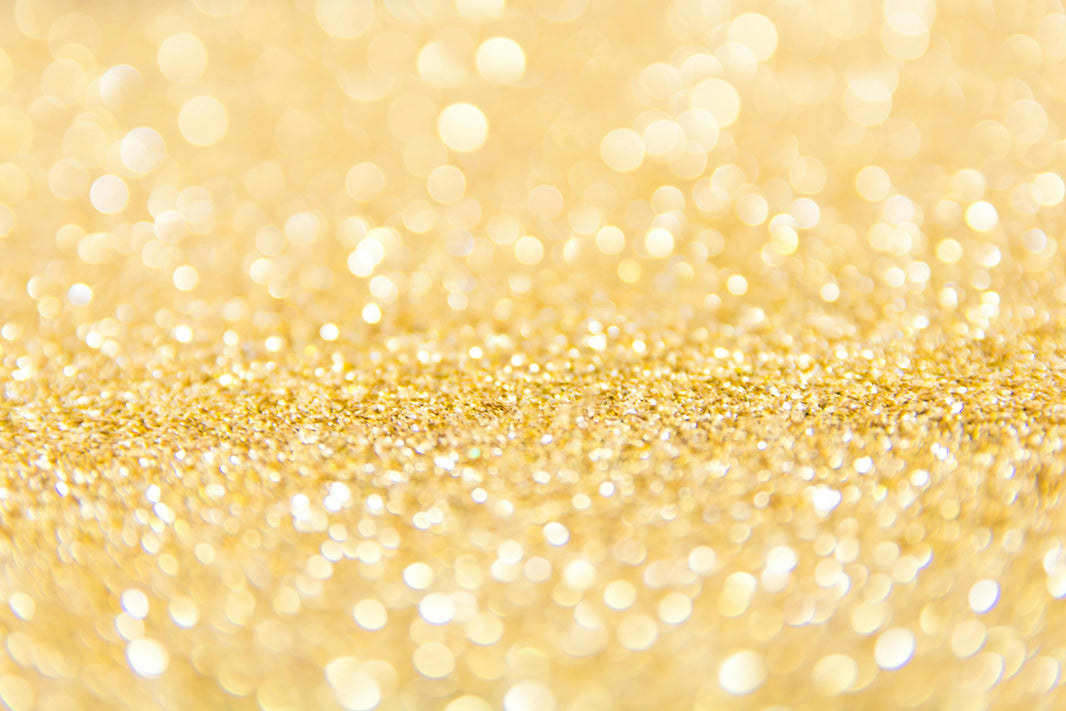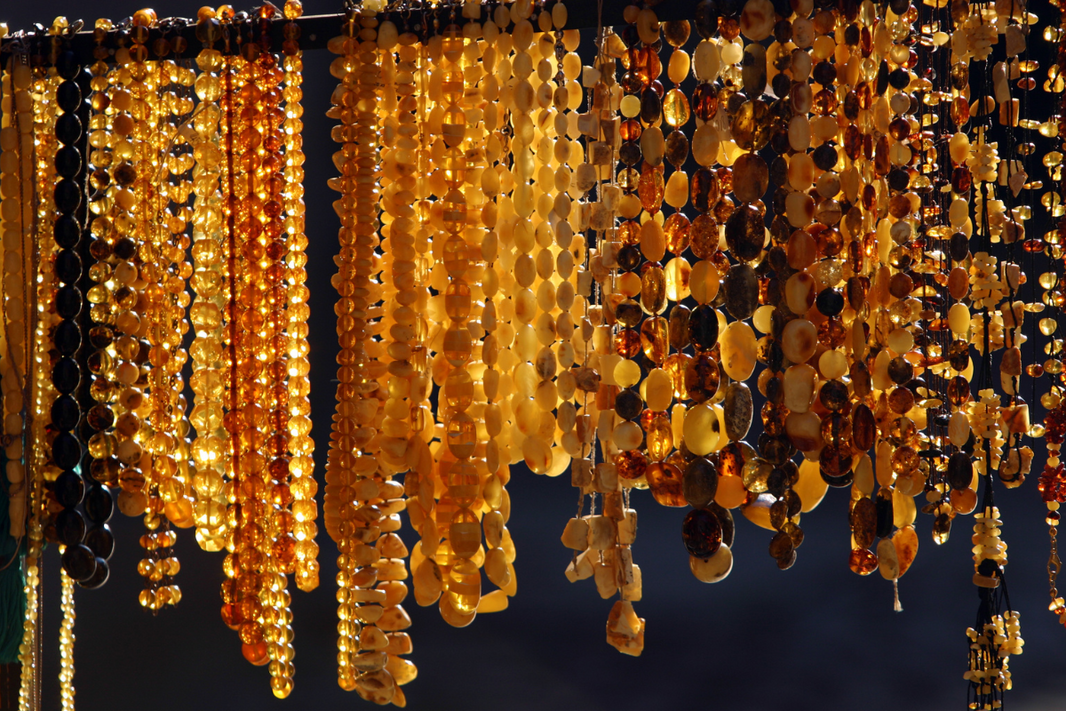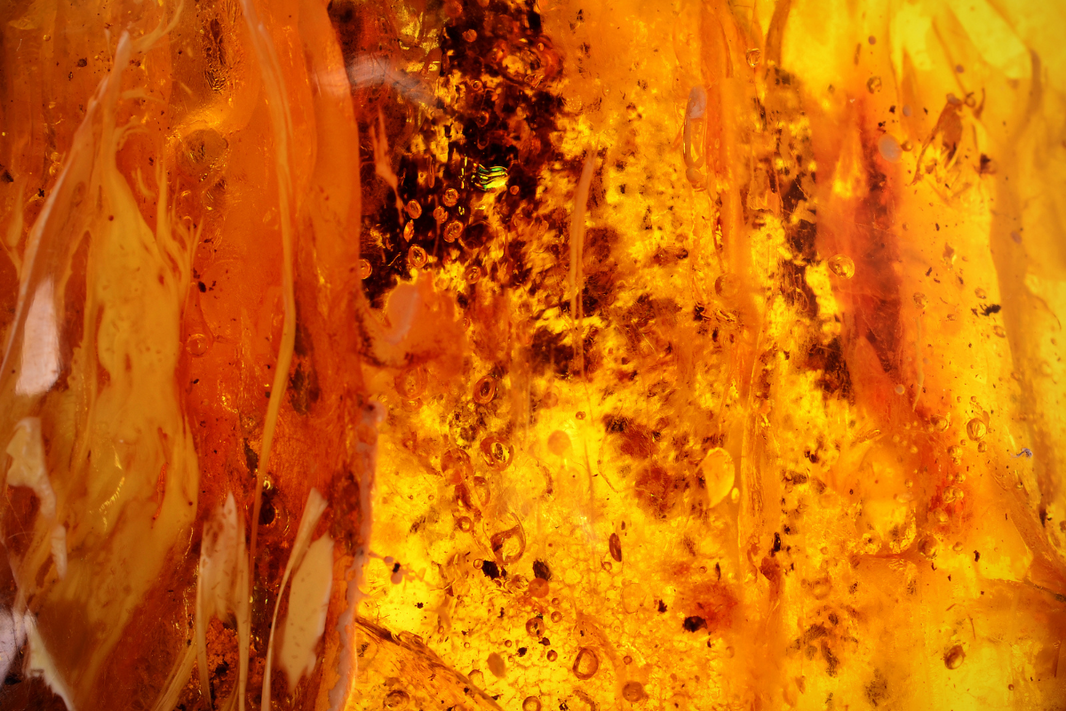Trade beads are beads that were used as a medium of barter and are considered to be one of the earliest forms of trade between members of the human race. A fascinating thing about trade beads is that many experts believe that bead trading was one of the reasons why humans developed language.
HISTORY OF TRADE BEADS
Made to facilitate trade, beads in various forms have been used by explorers and then traders mainly across the African continent. Ancient trade beads were also in wide use amongst the Native tribes of the United States and Canada, and throughout Latin America.
Bead designs were highly varied and often based on local sources of shells, stone, bone and other organic materials including ostrich eggshells and were valued based on the scarcity as well as the particular colour, size and form of each type of bead.
Bone, ostrich-shell and metal beads have been recovered from late Stone Age and Iron Age sites in Africa. Stone beads were also used to trade in western Sudan in the first millennium A.D.
In February 2021, we even learned that Venetian glass trade beads had been found at three prehistoric Eskimo sites in Alaska, including Punyik Point. The area was on ancient trade routes from the Bering Sea to the Arctic Ocean and archaeologists estimated their arrival on the continent to sometime between 1440 and 1480, predating Christopher Columbus.
THE EMERGENCE OF GLASS TRADE BEADS
The first glass beads arrived in West Africa before the 15th century via the trans-Saharan trade with North Africa. The importance of such trade was recorded in the writings of Arab travellers during the 12th to 14th centuries.
By medieval times, the trans-Saharan trade was well established. Early Saharan rock art - dating from the 1st millennium - depicting chariots suggests that contact with the north dates much further back in time.
African glass "Trade Beads" of European origin came into existence when European Traders along the route between Europe and Africa were pressed for an acceptable form of currency to exchange on African soil. Brightly coloured glass beads with exotic shapes and intricate patterns fit extremely well as the most desirable trade material due to the popular demand that African Cultures had for luxurious and unusual adornments.
Between the sixteenth and twentieth centuries, beads became the currency of wealth and an important sign of status. People were even buried with their beads - giving them the necessary trappings for safe passage into the next life, showing how precious these tokens were both materially and spiritually.
WHY GLASS BEADS?
Glass-working technology outside of Egypt and the Ancient trade in Northern Africa was mostly unknown in the Sub Saharan when Europeans began to enter into trading. Therefore, the exquisite glass beads that the European traders had to offer were widely and rapidly received.
Not just because glassmaking was not common in Africa, but mainly because Africans used beads for currency and wealth storage so that social status could be easily determined by the quality, quantity and style of jewellery worn. This created a high demand for the new glass trade beads made by the Europeans.
Glass beads were relatively cheap to produce, easily variable in terms of design and relatively easy to ship over land and sea. It didn’t take long for the trade in beads to become established.
European glass trade beads took on such importance and cachet that they became a status symbol of wealth and power in African communities. Certain types deemed the most valuable were reserved for use only by Kings and their Royal Courts.
Almost all cultures in this time period viewed these exotic "foreign" glass beads as a symbol of wealth and social standing. The beads entered into the realm of Heirloom Beads and Dowry Currency, and were passed down from generations of families as highly treasured possessions.
The classic traditions of African Adornment were finely crafted of gold, iron, and bone and other organic materials such as actual snake vertebrae. Real snake vertebrae have been used in Africa for centuries due to their powerful symbolism, even popularly worn by members of the traditional African society as a form of protection from evil charms and ill fate. It was this significance that inspired European glassmakers to develop moulded glass versions to use as trade beads from the early 1900s.
EVOLUTION OF GLASS MAKING TECHNIQUES
First created roughly 3,500 years ago in Egypt and Mesopotamia, glass bead making techniques have become more and more complex.
Glass beads are usually categorised by the method used to manipulate the glass – wound beads, drawn beads, and moulded beads. Ancient glassmakers mainly employed the first two forms where a glassmaker sat in front of a heat source and with the molten glass and either wound it around or drew it across a metal rod. Glass was also initially made from a simple formula utilising only three components; sand quartz, soda ash and limestone.
As product techniques evolved, a fusion or moulded technique was introduced by the Europeans.
Trade beads like our snake vertebrae beads were made using a fusion technique called mould pressed beads. The molten glass - made out of layers of powdered glass mixed with dyes - is forced into a mould to give beads a certain shape and heated in a kiln until they fused together.
ORIGIN OF OUR INTERLOCKING SNAKE VERTEBRAE GLASS BEADS
Our vintage, interlocking snake vertebrae beads were made in the early to mid-1900s in Europe by Czech, German and some French producers as trade beads.
Czechoslovakia in particular was fast catching up with Venetian production at this time and they recognised the cost-effective benefits of producing simpler beads than the Venetians with far less decorative attributes.
Snake Beads were the ideal choice partly due to their simple scalable design but also because the Europeans had learned that snake symbolism was potent and prevalent in African culture where actual snake vertebrae were used for many purposes.
The earliest known producers of imitation Glass Snake Beads were the Bapterosses of France, Redlhammer Brothers of Bohemia (now the Czech Republic) and the Risler Co, of Germany. All three employed different techniques to create beads with interlocking capabilities.
Jean-Felix Bapterosses developed the Prosser moulding technique, moulding cold paste under pressure and in Bohemia, glassworkers employed a pressing technique. Hot canes of glass would be fed into a machine, which could automatically press them into moulds, and simultaneously pierce a hole through the centre. They would then undergo a two-step tumbling process to refine rough edges and smooth the outer 'skin' of the beads.
WHAT IS THE SYMBOLISM ASSOCIATED WITH SNAKE BEADS?
Czech glass Snake Beads were designed to replicate the actual snake vertebrae of a coiled serpent. Snake vertebrae were used by the indigenous tribes of South Africa for many thousands of years, prior to the advent of glass production, and were considered an amulet of protection to many.
Snakes have a multitude of meanings in folklore. They are believed to evoke a creative life force and are said to have the strength to transform, whether that’s through spiritual awakening, death and rebirth, or simply transitioning from one stage of life to another.
Snake symbolism can be a reminder of an important transition you have already navigated, one you are going through or even a simple but powerful reminder that in life, transitions are a constant.
SNAKE SYMBOLISM IN JEWELLERY AND DESIGN
Cleopatra may have been the queen of accessorising with snake jewels but it was Queen Victoria that brought the snake into the spotlight. When she was engaged to Prince Albert, he gave her a snake ring, signifying everlasting and eternal love.
Today, the snake still features frequently in jewellery design.
African Snake Beads were very popular in the sixties and saw a big modern-day resurgence when pop singer Rihanna was photographed in August 2010 on the cover of ‘Seventeen’ magazine wearing a string of coloured Snake Beads.
The Snake Bead aesthetic has even borne a replica bead stitch known as ‘tubular Ndebele’, created by tribes within Zimbabwe to simulate the interlocking ‘one-ness’ of Snake Beads.
As African and sustainable eco-fashions continue to influence modern trends, the snake bead is set to be rediscovered we feel. And not just for its symbolism, history and beauty but, for us, the snake vertebrae glass beads also represent a wonderful early example of ethical replacement.
THE POWER OF PERSONALISATION
Did you know you can use numerology to embed a secret code in your Accent bracelet? With Atlas, you can create an Accent bracelet with a unique energy all its own by punctuating one of our Accent snake bead bracelets with numbers that have deep meaning for you or a loved one.
All eyes will be drawn to the unique style of a personalised Accent bracelet and only you decide whether to reveal the hidden meaning. A great way to express your inner self and share your story to connect with others.
Mix the meaning of colours, numbers and snake symbolism to create a truly personal Atlas piece that will accompany and support you through life.
HOW DO YOU CARE FOR YOUR SNAKE BEADS?
Our hand-carved beads, as well as our vintage trade beads, are durable but as they are moulded glass, they may chip if knocked too hard. All you need to care for them is the soft polishing cloth we provide that can be used to clean your beads. If needed, you can also use a tiny bit of soap and warm water to gently remove any substance from the beads before polishing them.
As with all of Atlas Accessories’ designs, our beads are created to be worn in all conditions so you can easily just wash them with you when you take a shower!
Come check out the various colours and combinations in our Accent collection and Trinity collection where we use or weave in snake beads to add that little bit of magic.

